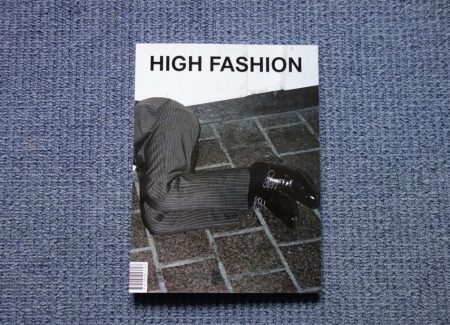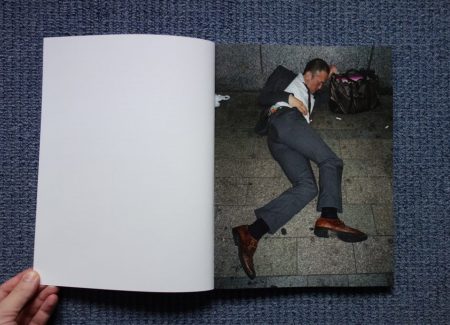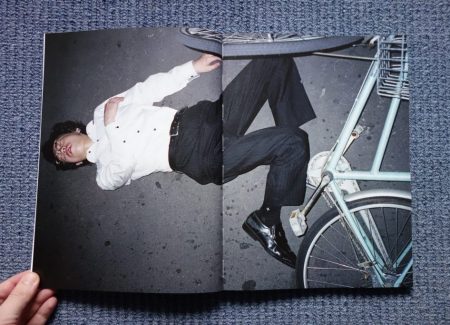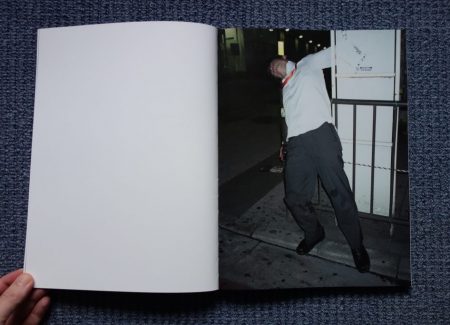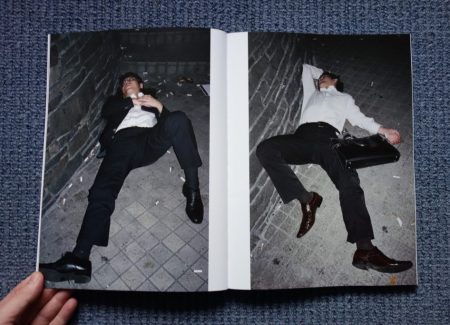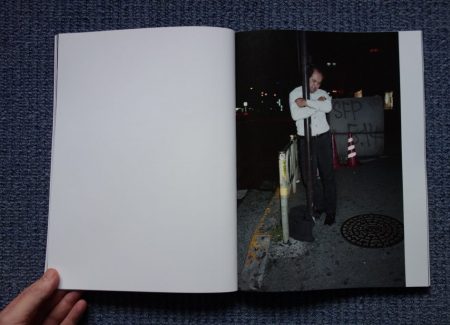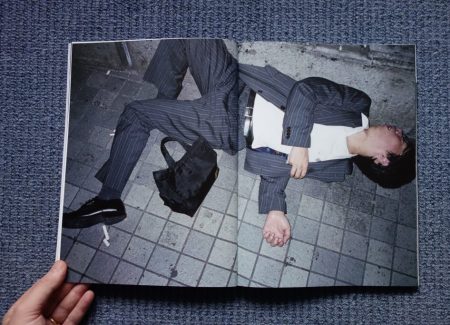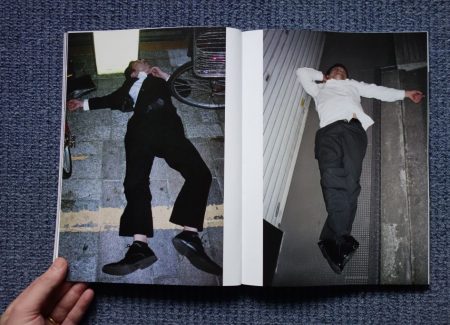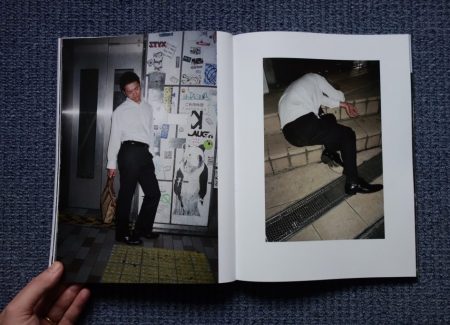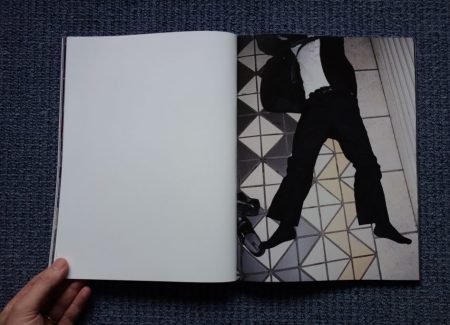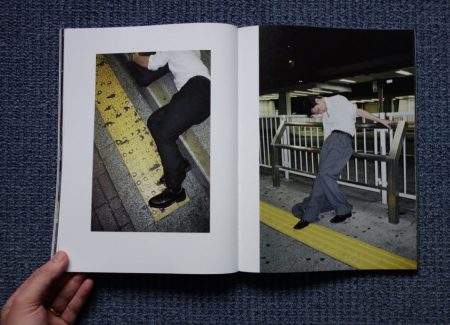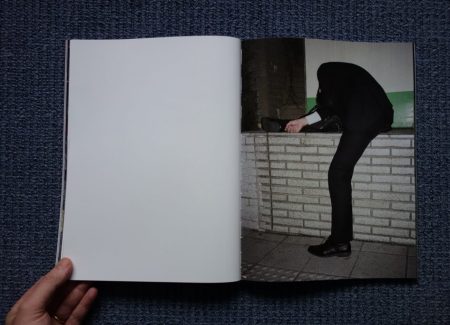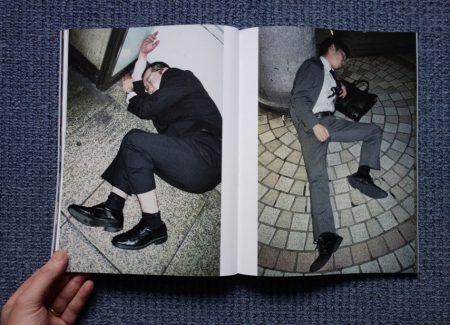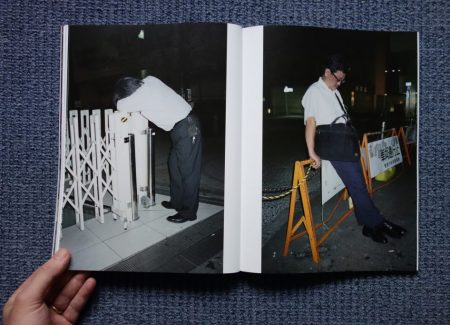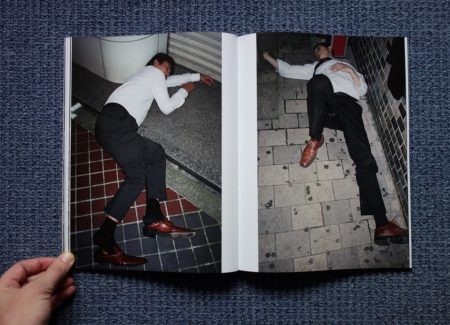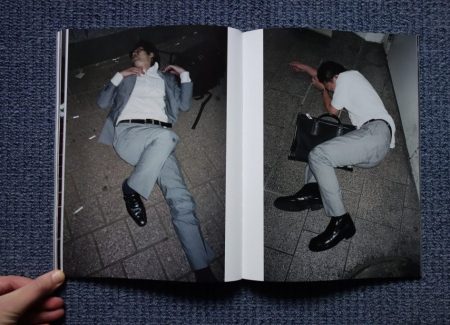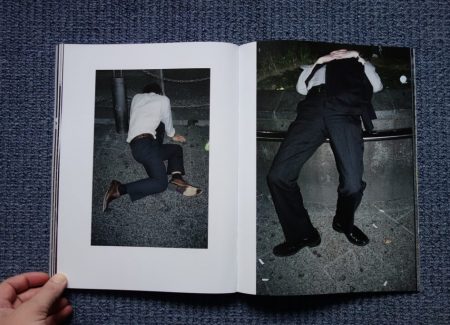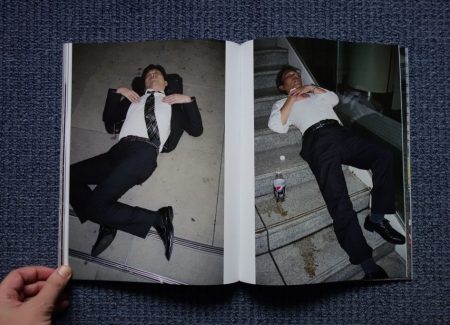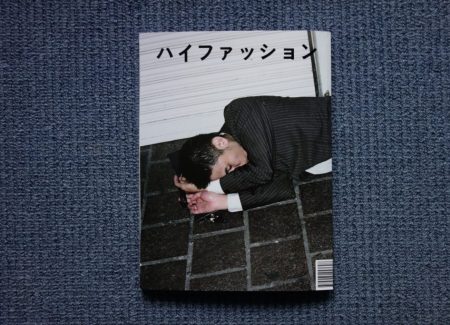JTF (just the facts): Published in 2018 by Zen Foto Gallery (here). Softcover, 120 pages, with 86 color and black and white images. Includes an essay by Damon Coulter in English and Japanese. Design by Full Metal Jacket. In an edition of 600 copies. (Cover and spread shots below.)
HIGH FASHION also comes in a special edition (here). This version has a Plexiglas cover and includes a signed/numbered print (in an edition of 25).
Comments/Context: At first glance, we would be forgiven for thinking that Paweł Jaszczuk’s new photobook HIGH FASHION was just what it says it is – a fashion magazine. With its glossy cover, the larger magazine-sized format, the boldly straightforward top-centered title, and the handy bar code, the softcover book follows all the unwritten design rules of an edgy fashion rag. Even the harshly flash-lit image on the cover might reasonably fit the genre (even though it captures the legs and feet of a suited man) – who knows, maybe it was shot by Juergen Teller or some other up-and-coming fashion contrarian.
But HIGH FASHION is a clever imposter, replacing the usual spreads of models and risky couture clothing with images of Japanese businessmen on the streets of Tokyo. Following in the footsteps of his 2009 publication Salaryman (from Morel Books, here), Jaszczuk has extended his examination of the late night antics of drunk and passed out executives, documenting their stumbles, falls, and exhausted naps on the street with the stylistic verve of a runway show. The social traditions of working long hours and then going out drinking with coworkers and customers are strong in Japan, so Jaszczuk likely had plenty of subjects to choose from, especially if he was willing to wander the streets of the bar districts near closing time.
The standard issue dark suits and white shirts of the men (largely regardless of age or position) provide an important inversion for Jaszczuk’s project – they are almost like a uniform, the exact cultural opposite of the impulse to wear clothing to stick out or define an identity that lies at the foundation of the fashion industry. But by paying close attention to the slumped figures most would deliberately ignore, Jaszczuk has uncovered a broad taxonomy of human poses and gestures just waiting to be photographed. And like Robert Longo’s Men in the Cities series from the 1980s (taken on New York rooftops), there is an unexpected, almost ballet-like grace to be found in these twisted, jarring movements.
Given that these men are variously dazed or entirely asleep, they have no reason (or ability) to pose, so what Jaszczuk shows us feels honest and largely unfiltered by codes of social behavior. Most of his subjects lie directly in the streets, with their shirts untucked and their suits slightly askew, the paving patterns of subway stations and public plazas providing a handy geometric backdrop. Tumbled, fallen, leaning, mumbling, and passed out, their sluggish bodies bend and crumple, their executive swagger now transformed into fetal curls and dramatic exhausted falls.
As we turn the pages and the forms become more familiar, we start to notice the singular details Jaszczuk has discovered. We see a briefcase used as a pillow, a nasty (but elegant) bicycle crash, a man asleep with headphones on, a man with his shoes off, and multiple combinations of legs bent in every conceivable direction. The sequencing of the photobook is subtly clever, with pairs of images put together on single spreads so we can see the echoes of form and setting. There are men against fencing and road barriers, near metal security grates, on stairs, near the yellow bumped tiles that guide the blind, hugging poles, and bent over low walls and stone benches. Closer in, we see men cradling briefcases, carrying shopping bags, and arranged with pops of red (alternately a briefcase and a traffic cone), the fashion pairings of dark suits, light suits, striped suits, black shoes, brown shoes, and other sartorial choices creating easy back and forth comparisons.
But the best of the pairings make the most of formal echoes, where the bold lines of the bodies are caught in surprisingly fluid gestures. There are seemingly endless permutations of the one knee bent sprawl, where legs jack knife into interlocked angles. Other movements have a quiet sense of vulnerability, where folded hands, raised elbows, and arms over faces feel tenderly restful. And standing poses, often with a pronounced lean, highlight the bone weariness of these men, their chins slumped down like sleeping marionettes.
Seen as an integrated artistic statement, HIGH FASHION has all the components of a superlative photobook – smart photographs that show us something we might have overlooked, an unexpected design that provides an insightfully ironic context for the pictures, precise sequencing and image flow that enhances our attention to the details found in the photographs, and an overall mood that strikes just the right balance between light playfulness and deeper social commentary. Jaszczuk has turned the stereotypical drunk Japanese salaryman into a richly seductive and varied study of the human form, finding a jaunty parade of poses worthy of a catwalk in the gutters of nocturnal Tokyo.
Collector’s POV: Paweł Jaszczuk is represented by Zen Foto Gallery in Tokyo (here). His work has little secondary market history, so gallery retail likely remains the best option for those collectors interested in following up.
